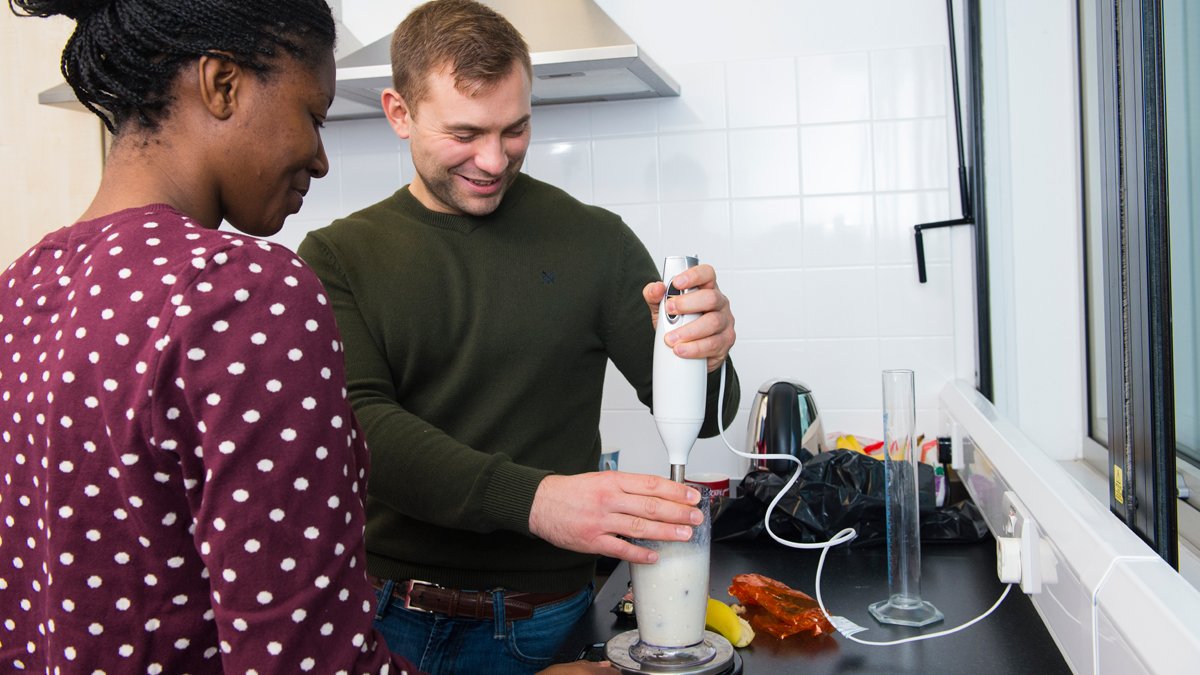A week in the life of a food science and nutrition student
From biochemistry lectures to laboratory-based practicals, discover what a typical week looks like as a first-year BSc (Hons) Food Science and Nutrition student at Surrey.

In your practical classes, you’ll have the opportunity to familiarise yourself with food science and nutrition methodology and develop laboratory experience
How you'll learn
Your teaching will be delivered through a combination of:
- Group work (e.g. discussion groups)
- Laboratory-based practicals
- Lectures
- Online learning
- Role plays
- Seminars
- Tutorials.
Outside of these, you’ll be expected to carry out independent study, including coursework, essays, laboratory write-ups and reading.
We’ve also introduced hybrid learning, a mix of online and face-to-face sessions, in light of the Covid-19 pandemic.
"In addition to lectures, I really enjoy getting hands-on experience in the laboratory as I find this to be the best way to learn."
Mer Karnchanachari, BSc (Hons) Food Science and Nutrition
A typical week in Semester 1 of your first year
In your first year, you'll receive approximately 30-35 hours of learning and 8 contact hours each week.
Monday
- 9am to 5pm – Independent study
Tuesday
- 11am to 12pm – 'Cell Biology' lecture
- 1pm to 2pm – 'Food Science and Nutrition' lecture
- 2pm to 3pm – 'Principles of Nutrition and Health' lecture
- 2pm to 3pm – Independent study to consolidate learning
Wednesday
- 9am to 10am – 'Biochemistry: The Many Molecules of Life' lecture
- 10am to 12pm – Independent study to prepare for Thursday’s laboratory session
Please note, Wednesday afternoons are left free for sporting activities.
Thursday
- 10am to 1pm – 'Cell Biology' laboratory session
- 1pm to 2pm – 'Food Science and Nutrition' lecture
- 2pm to 5pm – Independent study to consolidate learning
- 5pm to 6pm – 'Biochemistry: The Many Molecules of Life' lecture
Friday
- 9am to 10am – 'Food Science and Nutrition' seminar
- 10am to 5pm – Independent study to consolidate learning
Find out more about our food science and nutrition course
Disclaimer
The timetable and modules listed are indicative, reflecting the information available at the time of publication and may be subject to teaching availability, student demand and/or class size caps.
Given the changing nature of the Covid-19 pandemic, our hybrid learning model is under continuous review. See the latest information on all changes.
